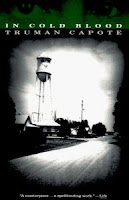 |
| A Cupboard Full of Coats |
A Cupboard Full of Coats
Yvvette Edwards
Jinx is a thirty year old woman, still living in the house where her mother, Joy, was murdered 14 years earlier. She is emotionally cut off from the few people in her life – her ex-husband and her son. She works as an embalmer, a pretty solitary occupation. A Cupboard Full of Coats takes place over one weekend, when a former friend of her mother’s comes over to talk about the circumstances surrounding the murder.
Jinx isn’t interested, and initially pushes Lemon away. Over the course of the weekend, he wears her down, wanting to explain his role in her mother’s death. Right away we know that neither Lemon nor Jinx actually killed Joy. That was the work of her fiancé, Berris. Despite Berris being the murderer, both Lemon and Jinx feel guilty.
I was interested in this book especially after reading this
article from the Guardian where Edwards recalls her editor telling her the book contained no white characters. Edwards said she couldn’t believe she had missed something so “glaringly obvious.” I admit, I wanted to know whether she had “fixed” this before the book was published, and if so, why? This actually ended up being a little distracting as I read. (In case anyone else would also be distracted, there is one white character, the mother of Sam, Jinx’s mixed race childhood friend. I think she has one line in the whole book). Normally I don’t pay much attention to the physical descriptions of characters, but I was looking for it here. Even if I hadn’t been specifically looking for the characters’ race, Edwards makes their skin tones a feature. Sam talks to Jinx a lot about color. Sam is
obsessed with color. She is light skinned, and states she would never be with a dark skinned boy. This leads to a somewhat interesting sub-plot. Jinx is also observant when it comes to color. She is worried that her skin is too dark, especially next to her mother's.
The main plot, though – what really happened to Joy – is more frustrating than interesting. The mystery is slow going. Edwards drops hints about the night in question, revealing little bits at a time until all is finally revealed at the end. Everything is told in an extremely heightened fashion. It gets a bit melodramatic at time, and I don’t respond well to that.
There are a few things I didn’t like about this book. First of all, Lemon just seems unrealistic. He shows up on Jinx’s doorstep, seemingly wanting to absolve himself of the guilt he feels, but at the end, he basically shrugs his shoulders and says
“It was her time, and when it’s your time, it’s your time.”
I can understand this, but if he’s already come to terms with his actions, then why is he at Jinx’s door? Who is he to assume that Jinx needs him, 14 years later, to help her move on with her life? And why is it okay that he ignores her instruction to go away, because, of course, he knows what’s right for her? He just seems to be a too-convenient catalyst for Jinx’s growth, especially since he just slips off without a trace.
Also, things seem to wrap up a little too conveniently for Jinx. She has realizations about her role in the murder, and learns that things were not as they seem. Okay, good so far. However, this resolution just makes it seems like perhaps if things had been a bit different, then perhaps Jinx would be culpable. This, to me, is unacceptable. Berris was at fault, the end. He was an abusive partner. If he hadn’t killed Joy on the night in question, then it most likely would have happened the next week, when she did something else to upset him. To make it seems that anyone but Berris was responsible feeds the cultural narrative that abused women are at fault for being abused.
And eeewwwwww, just ew, to the relationship between Jinx and Lemon. I get that people get together for various reasons, and sometimes people try to work stuff out through sex, but ew. I was totally creeped out.
All that said, I was bothered by the problematic elements because I think there was the potential for a pretty good book here. There are moments when you can see some it. Ultimately, though, it just didn’t deliver. Maybe it is a product of it being a first novel – I don’t know. At the end of the novel, it looks like Jinx is going to try to reestablish relationships with the people that are still in her life. I’d be interested in following Jinx as she matures, and in giving the author another chance, hoping that her style and skills mature as well.
Note: A Cupboard Full of Coats was longlisted for the 2011 Man Booker Prize.

























